The Cornell Lab Bird Academy › Discussion Groups › Joy of Birdwatching › Activities: Exploring Birds
-
 Here's my first scarlet tanager I spotted last summer in Newbury, MA. He was on the lowest tree branch and stayed nice and still for photos! Being bright red in New England made identification faster (I have mostly been using the Audubon app).
Here's my first scarlet tanager I spotted last summer in Newbury, MA. He was on the lowest tree branch and stayed nice and still for photos! Being bright red in New England made identification faster (I have mostly been using the Audubon app). -
Beautiful, I enjoy the beak detail in this picture.
-
-
 This is a red-golden pheasant in a local park in New Orleans. I was using the Audubon app for identification, but it wasn't in there. The reason being that this bird is not endemic to Louisiana! He was most likely abandoned or escaped from a coop. He's been in the park for years though and has become a bit of a legend!
This is a red-golden pheasant in a local park in New Orleans. I was using the Audubon app for identification, but it wasn't in there. The reason being that this bird is not endemic to Louisiana! He was most likely abandoned or escaped from a coop. He's been in the park for years though and has become a bit of a legend! -
He looks like he was on the move!
-
-
I am looking forward to completing this course and another that my daughter bought for me for Christmas. Living in TN, I am very fortunate to be able to see from my kitchen window many different songbirds at my feeders; geese, ducks and cranes in my neighbors lake and a Coopers Hawk that roams the area. Now I need to buy a guide to take with me for my walks in the woods.
-
Used Merlin app to identify Hairy Woodpecker and dark eyed Junco on my feeder
-
Activity 1 - Favorite bird from the wall of birds is a Great Grey Owl. I was fortunate to see one of these with my father, who is a much more accomplished birder than I, when I was in my teens. Just the massive size of this bird is incredible. The second striking feature are its eyes. Unlike many owls, they are quite adapted to hunting in the daytime. Despite the one we saw being hundred yards away, when seen through even basic binoculars it felt like it was staring into your soul. Runner up has to be the Kakapo, or flightless parrot of New Zealand. Their incredible camouflage blends in so well to the moss covered grounds of the rainforest like locations where they live. Activity 2 - The first bird, which will also be my photo bird is the Black-capped chickadee, one of the very common feeder/backyard birds in our area. For a bird smaller even than a sparrow they have the bravery of a lion. The often will scold the owner of the feeder should they let the feeder become empty, waiting directly nearby as you fill it. They remind me of a smaller version of a banty rooster. They are in the family Songbids. Another common feeder bird here is the Hairy Woodpecker, which is in the woodpecker family. The third is the Eastern wild turkey, which is the chicken like bird group.

-
 unfortunately through my screen but i was very pleasantly surprised by this pileated woodpecker at my suet feeder
unfortunately through my screen but i was very pleasantly surprised by this pileated woodpecker at my suet feeder -
Activity 2: i regularly see white and red breasted nuthatches, mourning doves & various woodpeckers and many many more types Activity 3: I just love chickadees!
-
Activity 1 : The secretary bird will always catch my eye after its introduction to me in the movie, Kung Fu Panda. It's an elegant, powerful, and beautiful bird. This bird can make snakes it lunch with its fatal kicks. That's one of the main reasons it catched my eye. Activity 2: 3 different groups of birds. I was able to identify a mocking bird ( usually present in my front yard), a red-bellied woodpecker ( always a beautiful sight), and a dark moth raptor (!! I saw a fast-flying bird swoop into a tree in a round-about and sneaked up on it; I noticed it had a sharp hooked beak and got excited). These are my three species. They have given me a lot of joy and I hope I keep discovering more neighborhood friends. Activity 3: Recalling back to Activity 2, the dark morph raptor has come into my life with so much mystery and "carnivore-y" that I want to be able to spot it again. Its sharp beak and proud posture created such an image in my mind. I took a picture of this mystery but it was on my low pixel android phone. Wish me luck on my journey to identify this bird!
-
 This is the Clark's Nutcracker. He loves and brutalizes our suet, dumping all of our seed from feeders onto the ground. I guess they are ground feeders or are they just too big to stably feed from the feeders? We do know they like the seeds from pinecones. Our online field guide says they like to make cache's of seed and can become accustomed to humans. They are certainly comfortable around our feeders and dominate the scene along with the blue & gray jays and woodpeckers. The Nutcracker will call others to come to feed! The little birds wait for the nutcracker to fly off before they come back to feed. We live in the Colorado Rockies.
This is the Clark's Nutcracker. He loves and brutalizes our suet, dumping all of our seed from feeders onto the ground. I guess they are ground feeders or are they just too big to stably feed from the feeders? We do know they like the seeds from pinecones. Our online field guide says they like to make cache's of seed and can become accustomed to humans. They are certainly comfortable around our feeders and dominate the scene along with the blue & gray jays and woodpeckers. The Nutcracker will call others to come to feed! The little birds wait for the nutcracker to fly off before they come back to feed. We live in the Colorado Rockies.
-
This morning I looked out my front door just in time to see one of my favorites, the Red-Bellied Woodpecker.

-
I have one visiting in my yard this year for the first time. I usually have downy, hairy and the occasional pileated so I was thrilled to have another type!
-
-
I have tried to identify birds with the Merlin app, but the app has not worked for me. In my experience the app cycles through the same few birds, or suggests birds that are very out of place, such as wading birds when I am looking at birds in a field. I'm taking this course so that I can more intelligently use the Merlin app and printed bird guides. Like others here I became focused on birding while walking during this pandemic. I noticed subtle colors and varieties on birds that I hadn't seen before. I live in northern California.
-
I enjoy watching birds in my backyard. I started feeding them and noticed that not every bird is a sparrow! One feeder lead to another and now I have a squirrel proof pole system with multiple feeders to attract a variety of birds. At this time I am seeing gold finches, house finches, chickadees, northern cardinals, titmouse, white breasted nuthatches, Carolina wrens, sparrows, downy woodpeckers, and red bellied woodpeckers. My most recent new sighting was a flock of Pine siskins that we saw for about a week. Occasionally we have hawks visit - I believe Cooper Hawks. I was lucky enough to visit Bar Harbor, Maine and Acadia National Park (spring of 2019) and attended a birding event. I was amazed with the experience. I loved seeing warblers and the ocean birds - especially the Puffins. Now that we are not traveling; I hope doing these activities will help me increase my bird knowledge and give me a distraction from the crazy times we are experiencing.
-
Activity 1: A few of my favorite birds from the Wall of Birds are the Yellow-Billed Magpie, Shoebill, and Great Gray Owl. The reason I like each of these birds is due to their unique physical attributes. Activity 2: A few birds that I observed outside which I was able to narrow down to one group are: Mourning Doves belonging to the pigeons and doves, Black Phoebes belonging to the songbird subcategory of flycatchers, and Red-tailed Hawks belonging to the raptors. Activity 3: One of my favorite birds in my neighborhood is the Northern Mockingbird. It is a medium-sized grey songbird with white on its wings, thin black legs, light-colored yellowish eyes, and a very impressive long tail! The reason it is one my favorite local birds is due to an experience I had with this particular species when I first moved into my current home. It had been late last winter and I had just laid down in bed after a tiring day of shuffling boxes. As I started to close my eyes, a loud intriguing noise struck my ears. Was that a car alarm I heard? No, that’s not it. As the song continued, I realized it was taking on different tunes. At one moment it sounded like a typical songbird, another a harsh almost mechanical sound. However, what surprised me most was the noise kept on going and going. I was very confused but fascinated at the same time. Whatever was making these sounds sure had stamina. My curiosity in the end got the better of me and coaxed me out of bed to go rummaging for a local bird guide I had safely tucked away in a thankfully clearly labeled box. With the help of my trusty guide, I discovered this singing prodigy was no other than the Northern Mockingbird and that during nesting season they can sing throughout the night! With the satisfaction of successfully identifying this lovelorn avian, I went back to bed and let its quirky song put me to sleep like a lullaby. Now whenever I hear a Northern Mockingbird it makes me reminisce about that night.
-
My husband and I were gifted this course for Christmas, along with a bird feeder for our yard in RI. I have always loved cardinals and was really excited when we had a cardinal visit our feeder right away. We are noticing so many great birds in our yard and neighborhood now!

-
I have been interested in birding for some time but had not been as intentional with it until last year--with the help of some helpful resources and gifts from my partner, sister, and colleague. I love seeing peregrine falcons and condors / vultures in CA (which I did not see really in Boston), and hummingbirds.
-
Hello. I'm working through this course, and this is my first post. So we will see how it goes. I live in Mount Airy, MD -- near Baltimore. Went out in the backyard yesterday (31-Dec) evening and the first birds I saw were a Junco, then a Chickadee, and a Carolina Wren that came out of a hydrangea and sang to me. Those are all in the Songbird group, I think. There was a Downy Woodpecker that was eating our suet -- that's group 2. And then there is a small pond along our walk that has Mergansers on it in the winter. I'll count that as group 3. My favorite bird in my neighborhood is the Indigo Bunting. I attached a picture that I took a couple summers ago at Audrey Carroll Sanctuary near my house. At this time of year, I also really enjoy the Nuthatches. I like the staccato song they sing while they climb down the tree trunks. Thanks for reading! I'm really enjoying the class, and have learned quite a bit!

-
Hello, Seems like there will be a lot of new birders now that we are home and taking time to see what is around us! I too got this course as a gift, although I have been a sort of bird watcher for a while. Looking forward to sharing experiences along the way!
-
Like others, I got this course as a gift since I have been birding during the pandemic as a new fun hobby since I discovered the Audubon app in late spring. I recently came to Florida from my home in Philadelphia and I am having such fun watching birds on the beach. This is a photo of my favorites: Royal Terns. I like how their wintertime black heads look like Groucho Marx eyebrows. In the photo you can also see a ruddy turnstone, which took me forever to identify. It is hard learning to bird while social distancing since it is less easy to talk with experienced birders. Even so, I am proud to have identified more than 70 birds! I wish I had a better camera to get some closeup shots. Some of you have some amazing photo skills!

-
I got this for Christmas along with other birding gifts, having become a nascent birdwatcher during the pandemic. My (adult) children are humoring my obsession quite gracefully. So at my backyard suet feeder in Central Virginia I have one bird that visits occasionally that I am having trouble identifying- my best guess is least flycatcher but not sure he should be here this time of year. Smaller than a sparrow, white eye-ring, two white bars on wings, and from back his black wings with white bard touch to make distinct V below grey back. Advice appreciated!
-
 Does your bird look anything like this? If it does you probably have a 'Ruby Crowned Kinglet'
Does your bird look anything like this? If it does you probably have a 'Ruby Crowned Kinglet' -
@Cecilia Thanks for suggestion! I think my little fellow is not quite that little - seemed bigger than my chickadees - but not sure. He is an itinerant visitor but I’m hoping he comes back soon and I will concentrate on size if he does.
-
-
I recently moved to the Finger Lakes Region of New York State and can't believe the birds in my backyard. We have seen Cardinals, Blue Jays, Heron, Mallard ducks and a woodpecker that I haven't been able to identify yet, I think it could be either a Downy or Acorn woodpecker. This class is a wonderful gift from my daughter and I am exciting about identifying the different groups of birds in my area and hope to join a bird watching group soon.
-
We mostly have songbirds in my area (there aren't a lot of waterfowl or shorebirds in the area). I helped out on the Christmas bird count in 2019 and I am particularly fond of the Say's phoebe as that was the first bird I managed to identify by myself. I've also always liked the Great Blue Herons, although I haven't seen them here.
-
Activity 2 I saw this white juvenile snow goose eating along side some Canadian Geese in the Nisqually Estuary Trail in Billy Frank Jr. Wildlife Refuge near Olympia,WA.

-
I’ve recently moved to a lake outside of Memphis TN. I live on a small lake and have enjoyed discovering all of wildlife that living in the area. I have particularly enjoyed the Great Blue Herons and the Green Herons.



-
Gorgeous pics!
-
-
 My daughter gave me this course for Christmas. How do I choose just one favorite bird lol? I love the Northern Flickers that visit my suet feeders (the bird on the right in the photo). I have a male and female and built a nest box for them that they already seem to have claimed even though it is December. I packed it full of aspen shavings animal bedding and they "carved" out the cavity just like you see in YouTube videos. I also like the Ladder-backed Woodpecker (left in the photo), 2 females and 2 males have been in my yard at the same time. I participate in FeederWatch and have done 2 counts so far. This has been a great hobby to begin during the pandemic.
My daughter gave me this course for Christmas. How do I choose just one favorite bird lol? I love the Northern Flickers that visit my suet feeders (the bird on the right in the photo). I have a male and female and built a nest box for them that they already seem to have claimed even though it is December. I packed it full of aspen shavings animal bedding and they "carved" out the cavity just like you see in YouTube videos. I also like the Ladder-backed Woodpecker (left in the photo), 2 females and 2 males have been in my yard at the same time. I participate in FeederWatch and have done 2 counts so far. This has been a great hobby to begin during the pandemic. -
We went on a nature walk in the back bay and saw ducks, shorebirds, songbirds, and a raptor.
Read More:
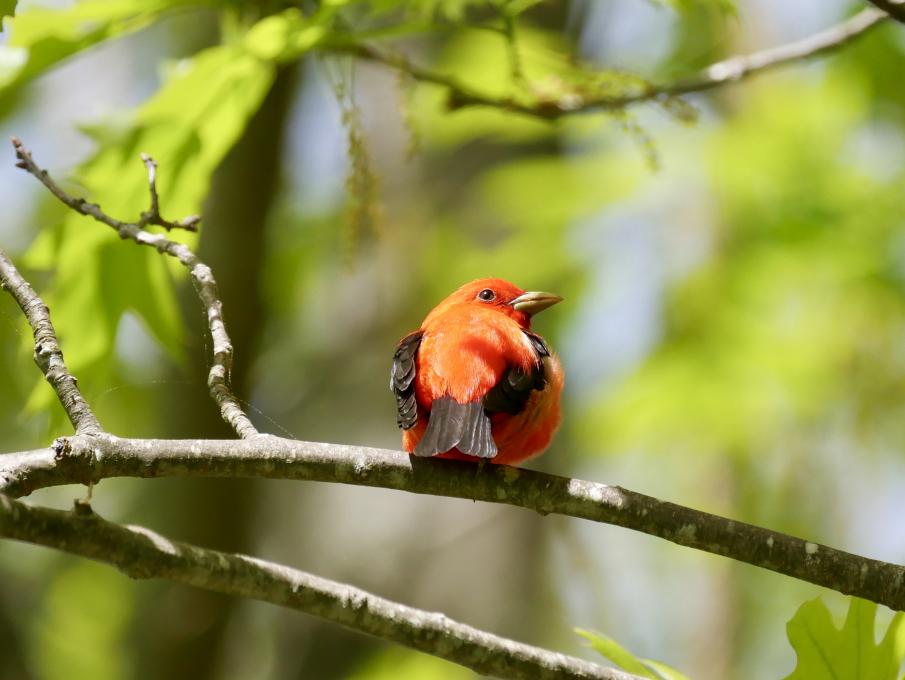 Here's my first scarlet tanager I spotted last summer in Newbury, MA. He was on the lowest tree branch and stayed nice and still for photos! Being bright red in New England made identification faster (I have mostly been using the Audubon app).
Here's my first scarlet tanager I spotted last summer in Newbury, MA. He was on the lowest tree branch and stayed nice and still for photos! Being bright red in New England made identification faster (I have mostly been using the Audubon app). 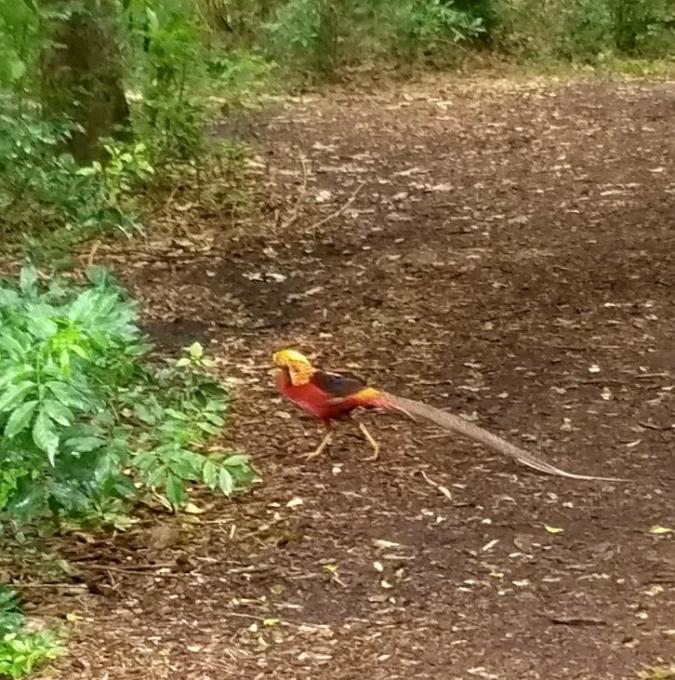 This is a red-golden pheasant in a local park in New Orleans. I was using the Audubon app for identification, but it wasn't in there. The reason being that this bird is not endemic to Louisiana! He was most likely abandoned or escaped from a coop. He's been in the park for years though and has become a bit of a legend!
This is a red-golden pheasant in a local park in New Orleans. I was using the Audubon app for identification, but it wasn't in there. The reason being that this bird is not endemic to Louisiana! He was most likely abandoned or escaped from a coop. He's been in the park for years though and has become a bit of a legend! 
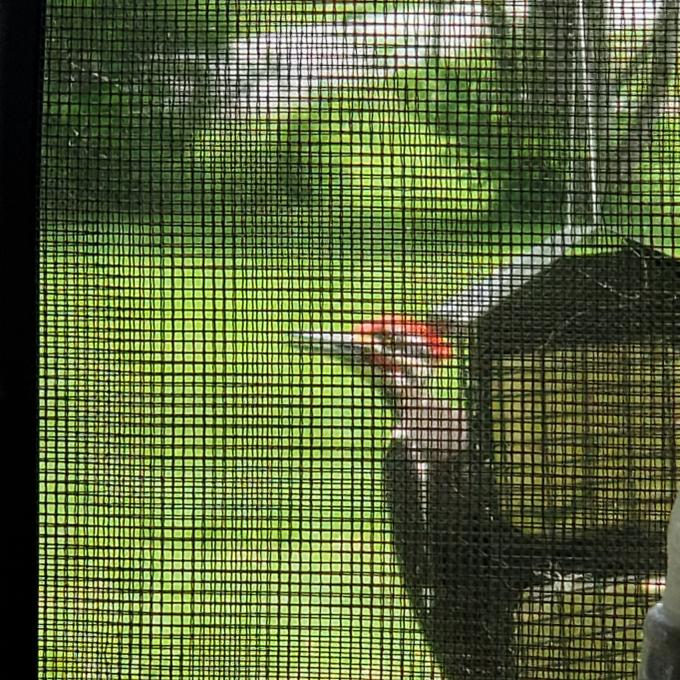 unfortunately through my screen but i was very pleasantly surprised by this pileated woodpecker at my suet feeder
unfortunately through my screen but i was very pleasantly surprised by this pileated woodpecker at my suet feeder 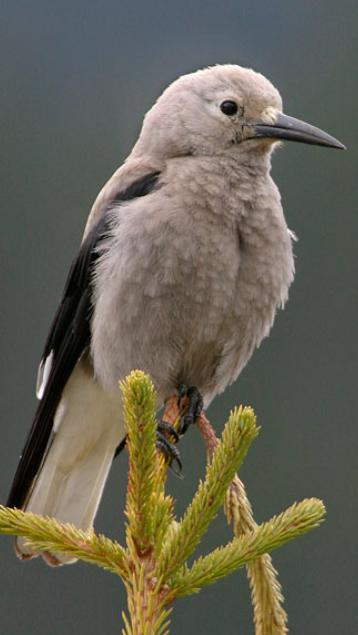 This is the Clark's Nutcracker. He loves and brutalizes our suet, dumping all of our seed from feeders onto the ground. I guess they are ground feeders or are they just too big to stably feed from the feeders? We do know they like the seeds from pinecones. Our online field guide says they like to make cache's of seed and can become accustomed to humans. They are certainly comfortable around our feeders and dominate the scene along with the blue & gray jays and woodpeckers. The Nutcracker will call others to come to feed! The little birds wait for the nutcracker to fly off before they come back to feed. We live in the Colorado Rockies.
This is the Clark's Nutcracker. He loves and brutalizes our suet, dumping all of our seed from feeders onto the ground. I guess they are ground feeders or are they just too big to stably feed from the feeders? We do know they like the seeds from pinecones. Our online field guide says they like to make cache's of seed and can become accustomed to humans. They are certainly comfortable around our feeders and dominate the scene along with the blue & gray jays and woodpeckers. The Nutcracker will call others to come to feed! The little birds wait for the nutcracker to fly off before they come back to feed. We live in the Colorado Rockies.
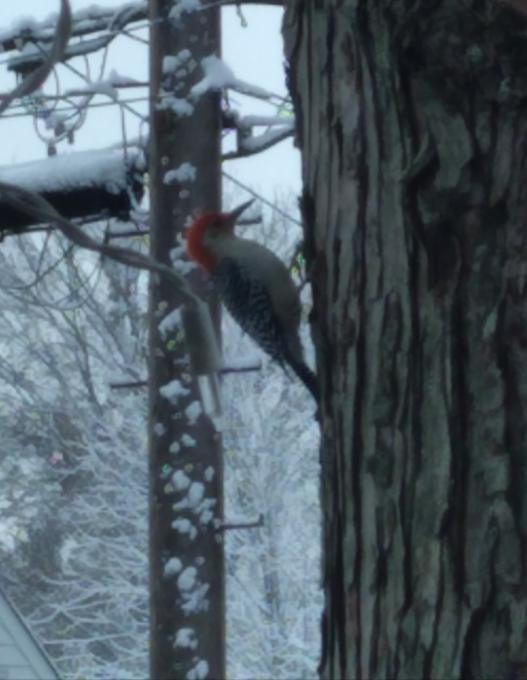

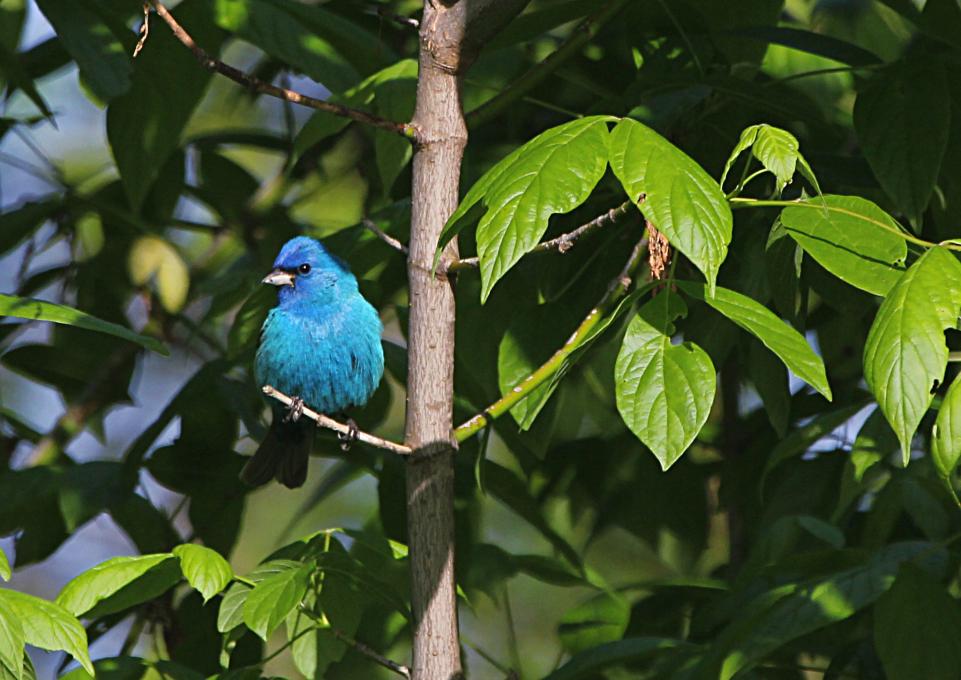
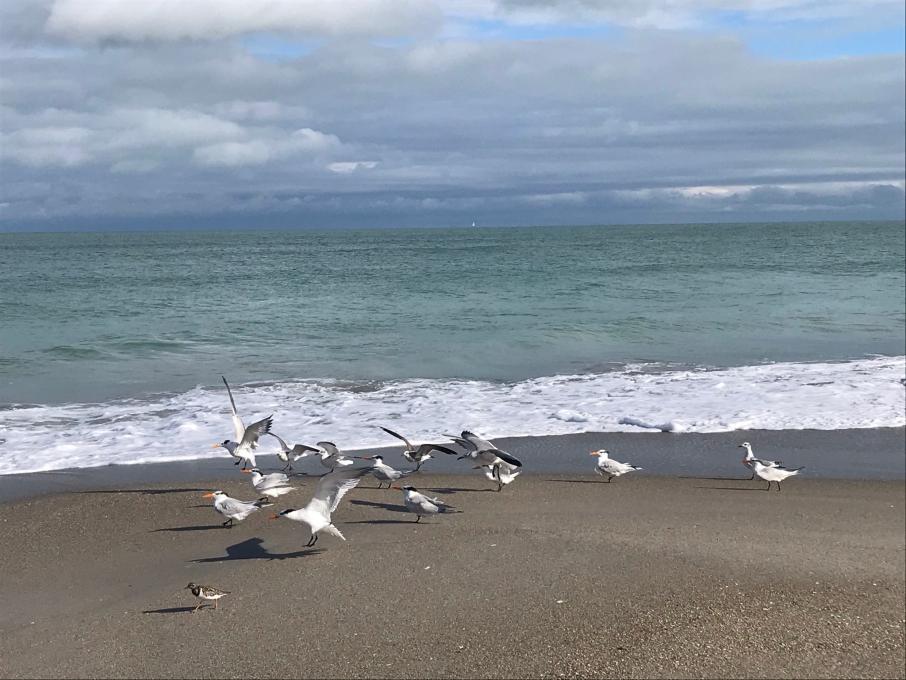
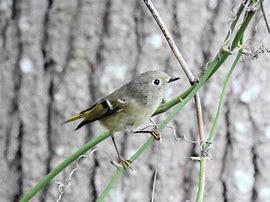 Does your bird look anything like this? If it does you probably have a 'Ruby Crowned Kinglet'
Does your bird look anything like this? If it does you probably have a 'Ruby Crowned Kinglet' 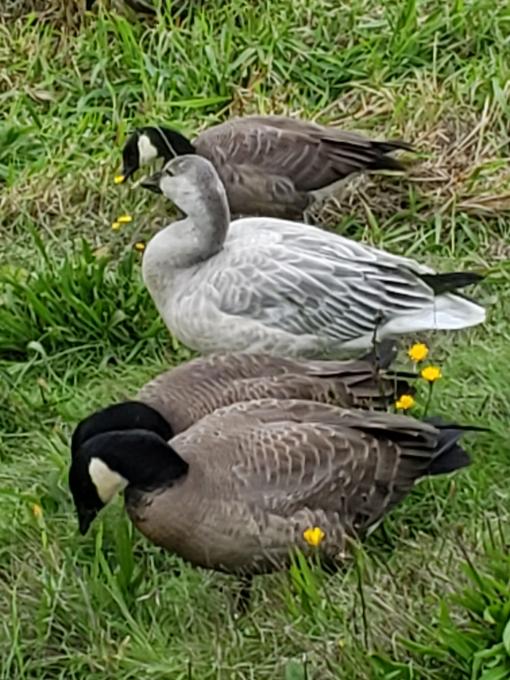
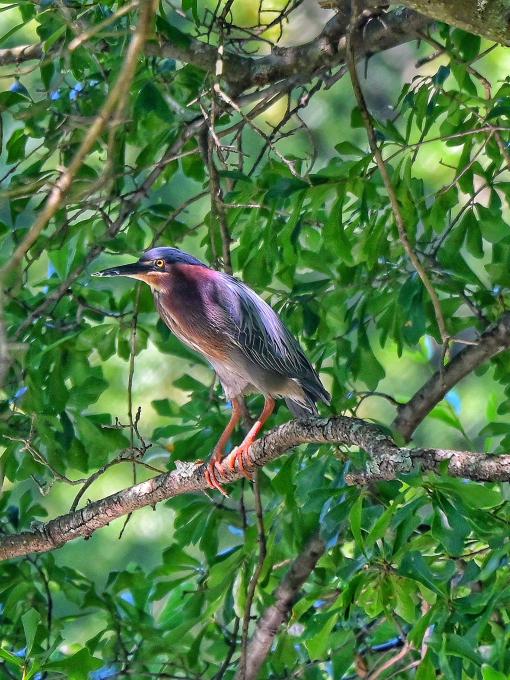
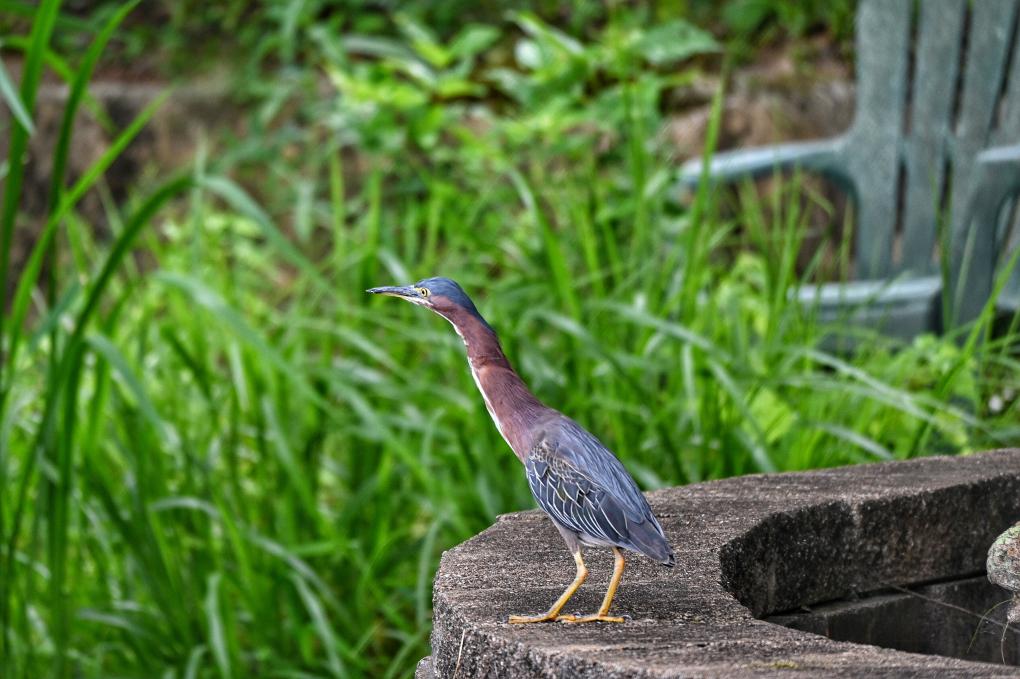
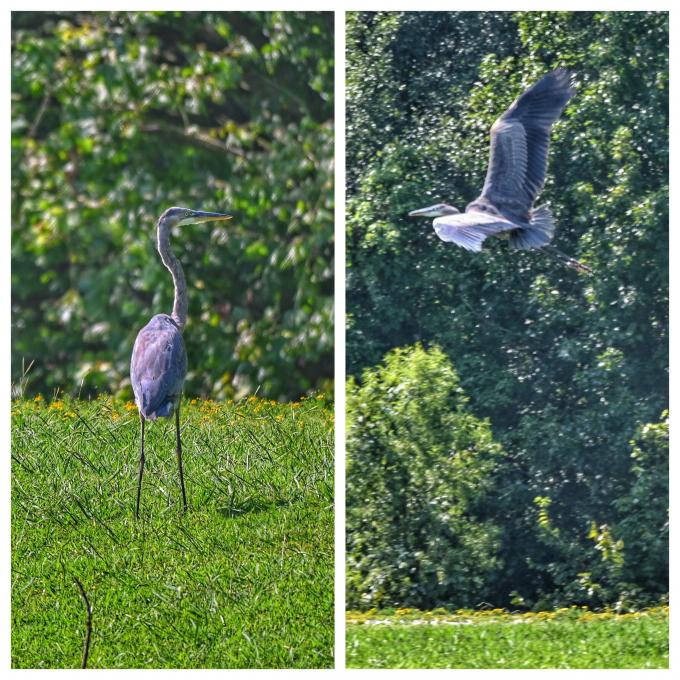
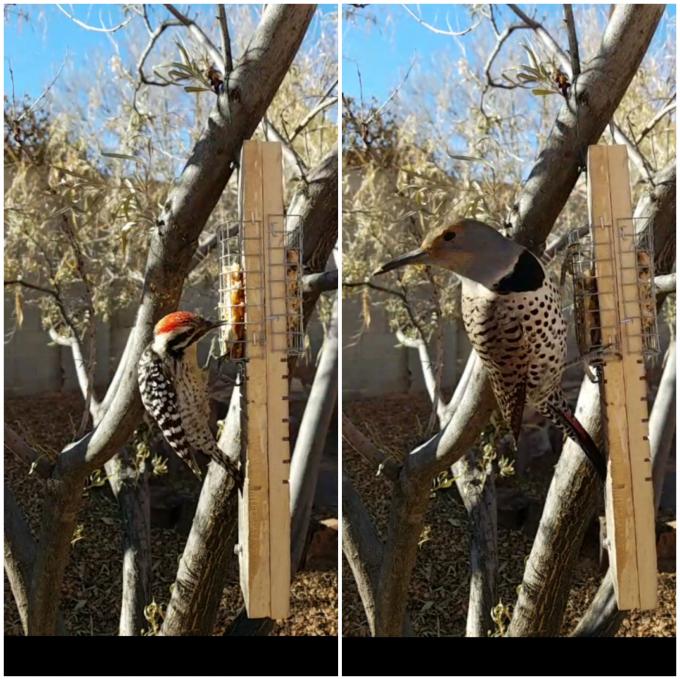 My daughter gave me this course for Christmas. How do I choose just one favorite bird lol? I love the Northern Flickers that visit my suet feeders (the bird on the right in the photo). I have a male and female and built a nest box for them that they already seem to have claimed even though it is December. I packed it full of aspen shavings animal bedding and they "carved" out the cavity just like you see in YouTube videos. I also like the Ladder-backed Woodpecker (left in the photo), 2 females and 2 males have been in my yard at the same time. I participate in FeederWatch and have done 2 counts so far. This has been a great hobby to begin during the pandemic.
My daughter gave me this course for Christmas. How do I choose just one favorite bird lol? I love the Northern Flickers that visit my suet feeders (the bird on the right in the photo). I have a male and female and built a nest box for them that they already seem to have claimed even though it is December. I packed it full of aspen shavings animal bedding and they "carved" out the cavity just like you see in YouTube videos. I also like the Ladder-backed Woodpecker (left in the photo), 2 females and 2 males have been in my yard at the same time. I participate in FeederWatch and have done 2 counts so far. This has been a great hobby to begin during the pandemic.